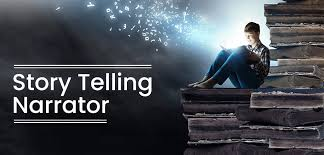
Have you ever listened to a podcast, audiobook, or explainer video and felt instantly connected to the message? That’s the magic of voice narration. It’s more than just speaking into a microphone, it’s storytelling, emotional translation, and creativity all rolled into one.
Whether it’s a documentary about ancient civilizations or a quirky animation about how to brew the perfect cup of coffee, the narrator sets the tone, pace, and mood. Let’s dive into why voice narration is such a powerful and exciting form of communication today.
How Voice Narration Shapes Our Experience
Think about your favorite movie trailer. That booming, confident voice likely gave you chills and made you want to watch the entire film. Narrators are storytellers who guide the audience’s imagination. They provide the feeling and emotional cues that visuals alone can’t always deliver.
In audiobooks, for example, a talented narrator can make characters feel real. They might shift accents, raise their voice during action scenes, or speak softly during emotional moments. They create a world you can hear, and suddenly your morning commute becomes a journey across galaxies or through enchanted forests.
Why Voice Narration Is in High Demand
In today’s digital-first world, content is everywhere, and not everyone has time to sit and read. Audio solves that problem. Brands and creators use voice narration to:
· Make content more accessible
· Increase engagement
· Add personality to their message
· Reach audiences on-the-go
From guided meditations to training videos to museum audio tours, narrated content is experiencing a major boom. People want to be spoken to in a way that feels natural, human, and authentic.
What Makes Great Voice Narration?
Not all narration is created equal. A strong narrator understands storytelling and communication just as much as they understand vocal clarity. The best narrators:
· Use emotion, tone, and pacing to match the story
· Speak clearly and naturally
· Understand how to emphasize important ideas
· Adapt their voice for different audiences
· Make listeners feel something
It’s less about having a deep or dramatic voice and more about connecting with the listener. A warm, friendly tone can be more powerful than a theatrical one if it fits the message.
Types of Projects That Rely on Narration
Voice narration isn’t just for movies or audiobooks. You’ll find narrators working in countless creative and professional fields:
- YouTube educational videos
- Guided tours and audio walkthroughs
- E-learning courses and tutorials
- Commercial ads and brand storytelling
- Animation and character voices
- Podcasts and documentary-style series
If there’s information to share and a story behind it, narration has a place.
Final Thoughts
Voice narration is one of the oldest storytelling tools we have, from campfire storytelling to modern streaming platforms. And today, its impact is stronger than ever. It helps us learn, feel, imagine, and connect.
So the next time you hit play on your favorite audiobook or video, take a moment to appreciate the narrator behind the voice. They’re not just reading words, they’re breathing life into them.